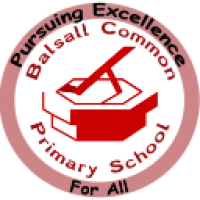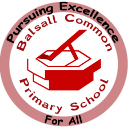Balsall Common Primary School
Balsall Street East, Balsall Common, Solihull, CV7 7FS, United Kingdom
Registration number 528879
01676532254
s2hrose@balsall-common.solihull.sch.uk
Balsall Common is a large school with 740+ pupils. We are constantly challenging ourselves to improve and look for new ways to engage children in their learning and encourage and inspire their curiosity.
In August 2016, Balsall Common Primary Sc...See more
See other opportunities to help us here
Learn more what is happening in the philanthropy space here

Sensory Room Project
CV7 7FS Solihull
31 Oct 2018 - 31 Jan 2019
The goal for our sensory room is to provide a safe haven where our pupils with Social Emotional and Mental Health (SEMH), Anxiety, Sensory Processing Disorder (SPD) or Autism Spectrum Disorder (ASD) can go when they need to either calm or stimulate their senses.
What is a sensory room used for?
A sensory room is a special room designed to develop a person's sense, usually through special lighting, music, and objects. It can be used as a therapy for children with limited communication skills.
Why do we need a sensory room?
A Sensory Room, is a specially designed room which combines a range of stimuli to help individuals develop and engage their senses. These can include lights, colours, sounds, sensory soft play objects, aromas all within a safe environment that allows the person using it to explore and interact without risk.
The room gives pupils a sensory diet, promoting language, aiding fine and gross motor skills and hand and eye co-ordination. Importantly, it also gives them a safe space to learn in and promoting pupils’ self-help skills.
How does sensory play help a child's development?
Sensory play includes any activity that stimulates your young child's senses: touch, smell, taste, movement, balance, sight and hearing. Sensory activities facilitate exploration and naturally encourage children to use scientific processes while they play, create, investigate and explore.
What are the benefits of Multi-Sensory Environments?
Multi-Sensory Environments can open up a whole new world for individuals with cognitive and physical impairments. Providing a stimulating environment can:
• Increase concentration and focus attention
• Develop or reactivate senses of hearing, sight, smell, touch, and taste
• Heighten awareness and improve alertness
• Improve coordination and motor development
• Promote cognitive development by increased brain function
• Lead participants to explore their environment
• Provide security
• Be an unrestrained atmosphere where participants feel able to enjoy themselves.
• Improve creativity
• Stimulate the sensory building blocks
• Develop of a sense of cause and effect
• Develop language – more vocalization
• Promote social interactions
• Promote mental and physical relaxation – Stress levels drop dramatically
• Result in more calmness and lower aggressive behaviours
• Increase opportunity for choice and self-determination
• Improve communication and sharing
• Lead to non-responsive patients becoming communicative
• Provide relief from pain and painful physiotherapy
Last but not least, participants are happier and have fun!
What is sensory equipment?
Sensory Equipment is a vital tool in helping to treat a variety of sensory disorders in both adults and children. Sensory Equipment can help develop key life skills such as vocalisation, gross motor skills, colour recognition and tracking amongst others.
This can range from sensory play kits, glitter storm lights, mood cushions, dark dens, weighted lap buddies, weighted blankets, sensory balls and torches.
Why choose Balsall-Common Primary School?
We pride ourselves in being an all-inclusive school, providing the best opportunities for all children in our care and we are constantly looking at ways of improving their lives in every possible way. We believe with our passion and dedication we can create an environment that will make a difference to all our pupils.
 Donation/Grant Opportunity
Donation/Grant Opportunity £0
donated
0%
Target Goal £3778
Balsall Common Primary School
EDUCATION/TRAINING
Project Name
Sensory Room Project
Helping beneficiaries
These are children that may not be identified as having a Special Educational Need but will still benefit from having use of this area. The parents of the children would also benefit indirectly as they see calmer more engaging children.
 Location
Location 


